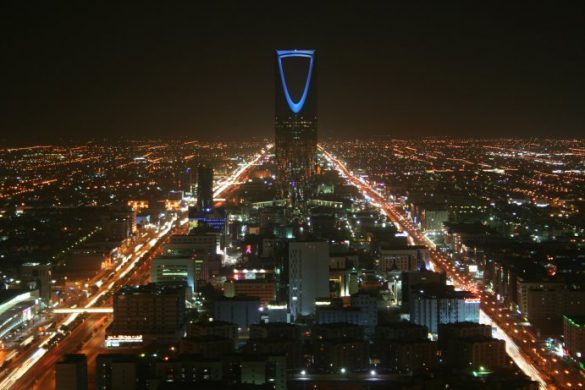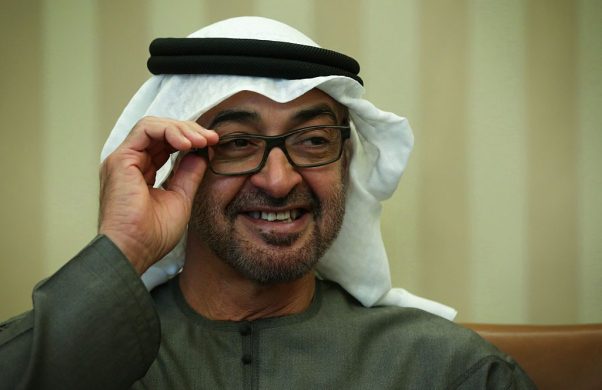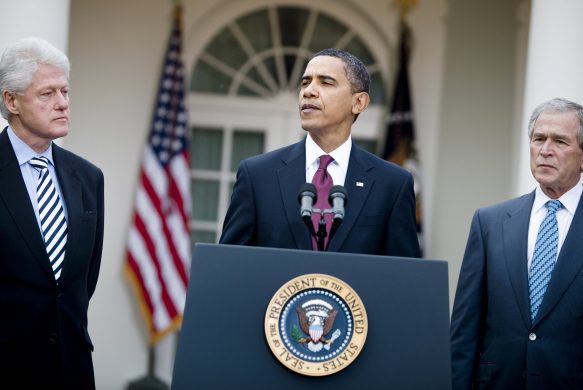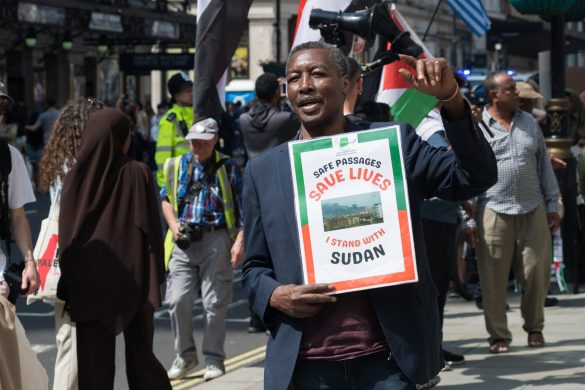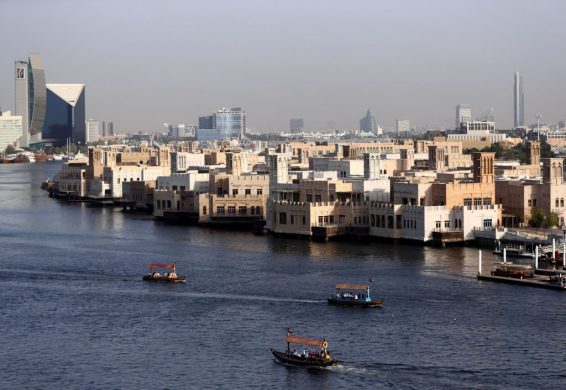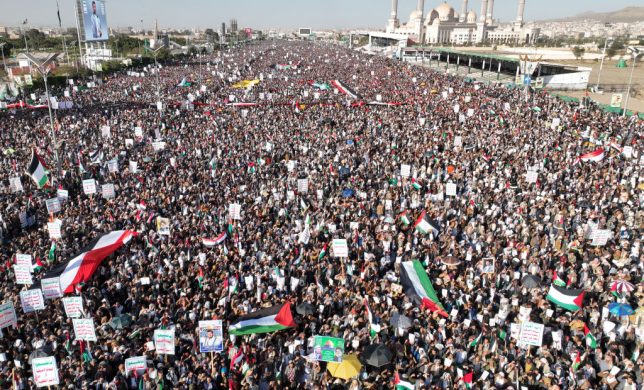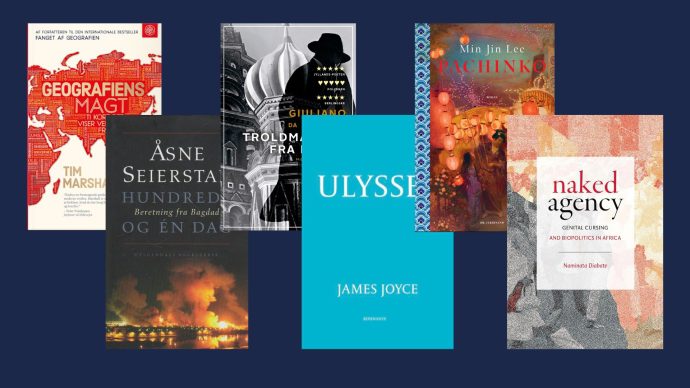Since 2014 Saudi Arabia has pursued a strategy to maintain market share in an oversupplied oil market, refusing to cut production as oil prices have plummeted.
But for various reasons, the sheikhs in Riyadh have gotten a bigger decline in prices than they bargained for.
Among the factors keeping prices low have been falling energy demand in China, new sources of energy from US shale producers and Iran (after the nuclear deal), and prospects for lower demand generally because of a sluggish world economy and pledges to cut fossil fuel consumption to prevent global warming.
As the world’s lowest-cost major oil producer, Saudi Arabia has every incentive to keep prices low to try to drive higher-cost producers in other countries (especially US shale producers) out of business, even if Saudi profits continue to lag.
Concerns about climate change will reduce the world’s reliance on fossil fuels, but Saudi Arabia will likely continue to keep prices low to ensure that it retains as high a share of the limited fossil fuel demand as possible.
Short term financial pressures
While rational in the long run, this Saudi strategy puts tremendous short-term financial pressure on the government, which will be running up fiscal deficits and spending existing financial reserves. Riyadh has got to do something fast to adjust.
The fact that regional rival Iran already has a much more diverse and less oil-dependent economy likely also has helped focus the minds in Riyadh.
In 2015 Iran actually managed a small nonoil trade surplus withnonoil exports of $42.4 billion and nonoil imports of $41.5 billion, though this partly is due to imports falling faster than exports as a result of the recently lifted economic sanctions.
Thus the recent launch by the new generation of Saudi leaders of their Vision 2030 for the country. The new plan’s goal is to end reliance on high oil prices, diversify the economy, and create millions of new jobs to employ a workforce (aged 15-64) projected to grow by more than 4 million from 20 million to 24 million by 2030.
Three themes
The ruling Saud dynasty proposed three themes for their reform program: a vibrant society, a thriving economy, and an ambitious nation. The plan intends to generate $100 billion in nonoil revenue by 2020 and create six million jobs in nonoil sectors by 2030.
Unfortunately, the new strategy is likely doomed to fail because it ignores Saudi Arabia’s underlying societal problems and the regime’s historic preference for maintaining its power.
A deeply repressive authoritarian state, operated as essentially the fiefdom of the ruling Al-Saud family, in close collaboration with the ultraconservative Wahhabi clerical establishment of Islam, will likely prove a major obstacle to reform and more private-sector-led growth.
Yes, authoritarian regimes have undertaken market reforms in other countries—China, for example.
Break with state religion necessary
But such ideological pragmatism is far more difficult when a government is partnering with an all-embracing rigid religious doctrine that regards “rational debate/inquiry” (in Islam this is the tradition of speculative theology, or Kalam) as forbidden and explicitly seeks to at all times imitate the practices of the earliest 7th century Muslims (the so-called As-Salaf As-Salih, or pious predecessors, of the first three generations of Muslims).
Unless the government breaks with the Wahhabist state religion, it cannot succeed.
In economic terms, Saudi Arabia’s challenges are unique. While China is shifting its economy away from the manufacturing and construction sectors and toward services and consumption, the Saudis have to wean themselves from reliance on oil sales for more than 70 percent of government revenues.
Two-thirds of Saudi nationals work for the government, but 80 percent of the private sector workforce is foreign. Riyadh must thus move Saudi nationals out of the government sector and into private employment, where pay will be determined more by the quality and quantity of the labor performed rather than one’s identity as a Saudi national.
Tourist industry
To achieve a “Vibrant Society,” Saudi Arabia intends to develop its tourism industry, which is labor intensive. Yet, the tourism plan focuses on a narrow segment of global travelers, i.e., pilgrims on Hajj to Mecca and Medina.
The government wants to increase the number of these visitors from 8 million to 30 million a year, while doubling the number of Saudi heritage sites registered with UNESCO. The economic benefit of such a bureaucratic exercise is unclear.
Muslims go on Hajj because of the religious dictates of the Koran. It is not easy to imagine turning that into a more massive tourism program. The death of almost1,500 pilgrims in a Hajj stampede outside Mecca in September 2015 highlights the obvious dangers in squeezing too many people into a narrow location at any one time.
The priority that Saudis attach to their religious concerns is reflected in the Vision 2030’s stated intention to construct “the largest Islamic museum…a major landmark for our citizens and visitors, where they will learn about the history of Islam, enjoy interactive experiences and participate in cultural events.”
An element of national envy among Saudis over the high-profile I.M. Pei-designed Museum of Islamic Art in Doha is also obvious, along with the Saudi intention to beat Dubai’s Burj Khalifa for the title of the world’s highest building though the construction of the 200-story Jeddah Tower by 2020.
Small and medium sized enterprises
To achieve a “Thriving Economy,” the Saudi vision includes an expansion of small and medium enterprises (SMEs) from 20 to 35 percent of the economy, creating a Public Investment Fund (PIF) of nearly $2 trillion, reducing the public sector share of the economy from 60 to 35 percent, and boosting female labor force participation from 22 to 30 percent by 2030.
These are not bad ideas. Scaling back the public sector could be accomplished by privatizing state-owned enterprises, using the proceeds to expand the PIF. The Saudi government has signaled its intent to sell at least a small part of Saudi Aramco to the public, transfer ownership of the rest to the PIF, and convert the state oil company into a diversified industrial conglomerate.
Such privatizations of public assets are generally efficiency-boosting and good economic policy in the long run. But such steps could entail significant job losses and higher unemployment among Saudi citizens, along with a loss of government control over sold entities. It is far from clear whether the Saudi government is willing or politically capable of stomaching either.
Role of women
As for expanding the role of women in the economy, the Saudi goals are directionally right but excessively timid. Consider the labor market situation facing Saudi women:
- They account for over 50 percent of Saudi university graduates, a remarkable level considering the gender imbalance in which there are five men for every four women in the working-age group of 15 to 64 years.4
- The latest available ILO data for Saudi Arabia (2014) show that female labor force participation at 20.4 percent was only a quarter that of male participation at 78.2 percent, yet female unemployment was 21.6 percent, almost eight times higher than male unemployment at just 2.8 percent.
- The actual employment rate for Saudi women in 2014 was therefore an abysmal 15 to 16 percent, compared with over 75 percent for Saudi men.
Even if Saudi Arabia reaches its new 2030 vision, including a decline in the total unemployment rate to 7 percent, women will continue to be materially better educated than men, with only a quarter of the chance to have a job.
This is not a recipe for a “vibrant economy.” Rather it is a continued blatant underutilization of Saudi Arabia’s female workforce that in the end will ensure that the country will fail to wean itself off oil. Assuming such a feat can be achieved by continuing to rely almost exclusively on male labor input is simply a fantasy.
The conclusion is inescapable that failure to adjust the Wahhabi clerical establishment’s opposition to equal labor opportunities for women, not to mention the ban on them driving to work or traveling unaccompanied by males, will doom the reform vision to falling short.
Transparency
Finally, Vision 2030 intends to create an “ambitious nation—effectively governed.” The Saudi government says it will embrace transparency and “will adopt leading international standards and administrative practices, helping us reach the highest levels of transparency and governance in all sectors.
We will set and uphold high standards of accountability. Our goals, plans and performance indicators will be published so that progress and delivery can be publicly monitored.”
The Saudi government further pledges to “deepen communication channels between government agencies on one hand and citizens and the private sector on the other. We shall facilitate interactive, online and smart engagement methods and ways to listen to citizens’ views, and to hear all insights and perspectives. We will encourage government agencies to improve the quality of their services, and to meet the needs of every citizen. We want to give everyone the opportunity to have their say so that the government can serve them better and meet their aspirations.”
Laudable goals, but transparency and e-government do not equal accountability or governmental legitimacy. And one cannot help asking what happens if say the now-published goals of Vision 2030 are not achieved?
Will Prince Mohammad bin Salman accept responsibility and resign? If Saudi Arabia were intent on being a leader in the Middle East, it ought to—for its own and the region’s sake—try democracy.
The Vision 2030 claims to espouse a dramatic increase in the economic independence and self-reliance of the Saudi people. Such an empowerment is not likely to succeed without giving the Saudi people a direct voice in electing their own government and breaking the chokehold of the Wahhabist clerical establishment.

